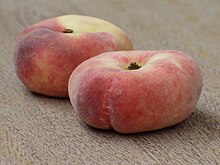How to Grow Donut Peaches in Your Garden
Donut peaches also known as Saturn peaches, are a unique and delicious variety of peach with a flattened, round shape and a sweet, juicy flavor. They are becoming increasingly popular among home gardeners due to their manageable tree size, high yield, and excellent taste. If you want to grow donut peaches in your garden, this guide will provide you with all the essential information, from choosing the right variety to harvesting ripe fruit.
Choosing the Right Variety
Before planting donut peaches, it is crucial to choose the right variety for your climate and soil conditions. Some popular varieties include ‘Saturn’ and ‘Galaxy.’ ‘Saturn’ is known for its extra sweetness, while ‘Galaxy’ produces slightly larger fruit. Ensure that the variety you select is suitable for your USDA hardiness zone. Donut peaches generally thrive in zones 5-9.
Selecting the Perfect Planting Site
Donut peach trees require full sun for optimal growth and fruit production. Select a location in your garden that receives at least six to eight hours of direct sunlight daily. The site should also have well-draining soil to prevent waterlogging, which can lead to root rot. If your soil is heavy or clay-based, consider amending it with organic matter such as compost to improve drainage and fertility.
Planting Donut Peach Trees
Planting donut peach trees correctly is essential for their long-term health and productivity. Follow these steps for successful planting:
- Dig a Hole – The planting hole should be twice as wide as the root ball and slightly deeper than the nursery container.
- Prepare the Soil – Mix organic compost or well-rotted manure with the soil to provide nutrients.
- Plant the Tree – Place the tree in the hole, ensuring that the graft union (the swollen area on the trunk) remains above the soil line.
- Backfill and Water – Refill the hole with soil, firm it gently, and water thoroughly to eliminate air pockets.
- Mulch the Base – Apply a layer of mulch around the base of the tree to retain moisture and regulate soil temperature.
Watering and Fertilization
Consistent watering is essential, especially during the tree’s first few years. Water deeply once or twice a week, depending on weather conditions. Avoid overwatering, as soggy soil can lead to fungal diseases.
Fertilization should be done in early spring and midsummer using a balanced fertilizer (such as 10-10-10) to promote strong growth and fruit development. Organic options like compost and aged manure can also be applied to enrich the soil naturally.
Pruning and Maintenance
Pruning is essential for shaping the tree, improving air circulation, and increasing fruit production.
- Prune in Late Winter or Early Spring – Remove dead, damaged, or diseased branches.
- Thin the Canopy – Allow sunlight to reach the inner branches for better fruiting.
- Encourage an Open Center – Train the tree to have an open-center shape by removing the central leader and promoting outward-growing branches.
Additionally, thinning the fruit when they are small (about the size of a marble) helps improve fruit quality. Aim to leave about six inches between each fruit to ensure they grow to a good size and receive adequate nutrients.
Pest and Disease Control
Donut peach trees are susceptible to pests such as aphids, peach tree borers, and fruit flies. Regularly inspect the tree for signs of infestation and use natural predators like ladybugs to control aphids. Neem oil or insecticidal soap can be effective against various pests.
Common diseases affecting donut peaches include peach leaf curl, brown rot, and powdery mildew. Prevent these issues by applying a dormant spray in late winter and ensuring proper spacing between trees for air circulation. Remove and dispose of any fallen leaves or infected fruit to reduce disease spread.
Harvesting Donut Peaches
Donut peaches typically ripen in mid-to-late summer, depending on the variety and growing conditions. Here’s how to determine when they are ready to be picked:
- The fruit should have a deep, vibrant color with no green patches.
- It should be slightly soft to the touch and easily separate from the branch with a gentle twist.
- A sweet aroma will be noticeable near the fruit.
Harvest peaches carefully to avoid bruising, and store them in a cool place. They can be enjoyed fresh, added to salads, baked into desserts, or preserved for later use.
Conclusion
Growing donut peaches in your garden is a rewarding experience that provides you with delicious, homegrown fruit. By selecting the right variety, ensuring proper planting, and maintaining the tree with regular care, you can enjoy a bountiful harvest year after year. Whether eaten fresh or used in cooking, donut peaches are a delightful addition to any garden. Start growing your own today and experience the joy of harvesting sweet, juicy peaches from your backyard!





